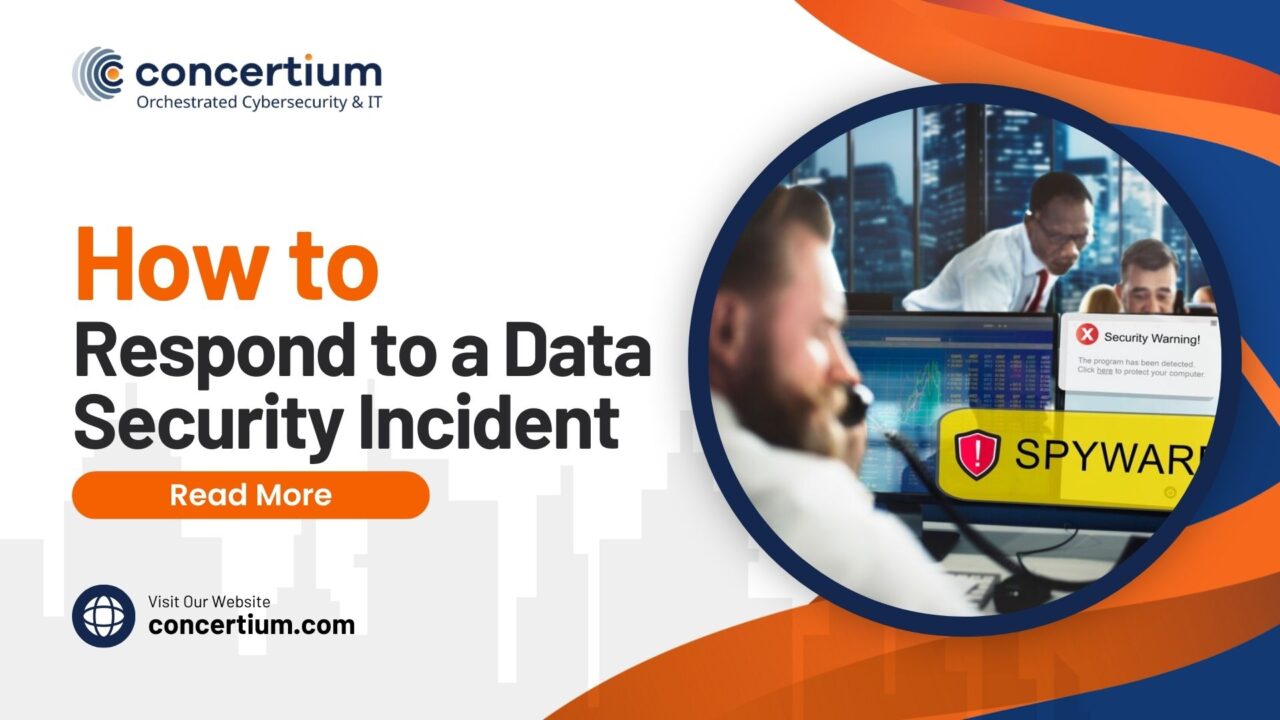How to Respond to a Data Security Incident
Navigating a data breach can be a daunting experience for any organization. The manner in which you handle a breach can significantly impact the extent of its repercussions. Therefore, having a well-prepared incident response plan is crucial. We will explore into the complex details of how to effectively respond to a data security incident. From containing the breach and notifying affected individuals to learning valuable lessons and taking preventive measures for the future, every step of the breach response process is vital in safeguarding your organization against undue cyber threats like identity theft, data breaches, password vulnerabilities, and information security breaches.
In this blog post, we will cover the essential steps of a data breach response, including breach notification protocols, post-incident analysis, and the importance of continuous improvement through lessons learned. Whether you’re dealing with a cyber attack, unauthorized access, or other security incidents, having a well-defined response strategy can make all the difference in safeguarding your organization’s sensitive data and maintaining trust with your stakeholders.
How to Respond to a Data Breach?
If your organization has encountered a data breach, it’s essential to stay calm and approach the situation methodically. Follow these steps to effectively respond to a data breach:
- Assess the Situation: Begin by evaluating the scope and nature of the data breach. Understand what data was compromised, how the breach occurred, and the potential impact on your organization and stakeholders.
- Activate Incident Response Team: Engage your incident response team or assemble one if necessary. This team should include IT experts, legal advisors, communication specialists, and relevant stakeholders.
- Contain the Breach: Take immediate action to contain the breach and prevent further unauthorized access to sensitive data. This may involve isolating affected systems, disabling compromised accounts, or implementing temporary security measures.
- Investigate the Breach: Conduct a thorough investigation to determine the root cause of the breach. Identify vulnerabilities in your security systems or processes that allowed the breach to occur.
- Notify Affected Parties: Notify affected individuals, customers, and stakeholders about the breach as soon as possible. Provide clear and transparent information about what data was compromised, the potential risks involved, and steps they can take to protect themselves.
- Comply with Regulations: Adhere to breach notification laws and regulations applicable to your industry and jurisdiction. Report the breach to relevant authorities and regulatory bodies as required.
- Enhance Security Measures: Strengthen your cybersecurity protocols and implement additional security measures to prevent future breaches. Consider conducting security assessments, implementing encryption, enhancing employee training, and regularly updating your security infrastructure.
- Communicate Effectively: Maintain open and honest communication with all stakeholders throughout the response process. Keep them informed about the progress of your investigation, security enhancements, and any additional steps being taken to address the breach.
- Review and Learn: Conduct a post-incident review to evaluate your response to the breach. Identify areas for improvement in your incident response plan, security practices, and overall cybersecurity posture. Use lessons learned to enhance your organization’s resilience against future data breaches.
Remember, a well-prepared and coordinated response is crucial in mitigating the impact of a data breach and restoring trust among your customers and stakeholders.
Here are 6 essential steps details to follow to respond data breach incident.
1. Recognize the Breach
Identifying a data breach is a crucial first step in responding effectively to a cyber incident. Despite its importance, recognizing a breach isn’t always straightforward, and many breaches remain undetected for extended periods, with an average detection time of 287 days. This delay puts organizations at a disadvantage, emphasizing the significance of proactive cybersecurity measures.
When dealing with a data breach, prompt action is essential. Establishing an incident response team becomes paramount, as this specialized group is tasked with evaluating the nature and circumstances of the incident. Understanding the key steps involved in responding to a security breach is critical, especially considering breach notification laws that often require organizations to report incidents within 72 hours of discovery.
Upon identifying a data breach incident, the response strategy should be swift and comprehensive. The incident response team must assess the severity and scope of the breach to determine the appropriate course of action. Factors such as the type of data compromised, the methods used by attackers, and potential regulatory implications should all be considered during this assessment.
2. Stop the Breach
After identifying a data breach, the immediate priority is to halt its progression. Maintaining a composed demeanor, focus on pinpointing the breach’s origin and implementing measures to stop it. The initial step of recognizing the breach is crucial, setting the stage for containment and resolution.
Efficiently stopping the breach involves isolating compromised systems or disabling leaking accounts. Time is of the essence, so swift and meticulous action is necessary. While suspending accounts or isolating systems, prioritize thoroughness to ensure no potential avenues for further breach remain unchecked.
It’s important to act decisively as every moment counts in mitigating the breach’s impact. Remember, temporary measures like suspending accounts can be reversed later if necessary. However, allowing the breach to persist increases the potential damage exponentially. Swift intervention is key to minimizing harm and facilitating a smoother recovery process.
3. Analyze the Data Breach
When companies confront a data breach, the initial reaction is often one of panic. The potential impact on a large number of customers and the potential reputational damage can be daunting. However, reacting with composure and methodical analysis is crucial at this stage.
It’s imperative to communicate openly and promptly with affected customers, but only after gathering all the pertinent facts. Rushing into notifications without a comprehensive understanding of the breach can exacerbate confusion and uncertainty.
Before initiating customer communications, a thorough analysis of the data breach is essential. This analysis should aim to uncover the breach’s origins, the extent of impact, and how individuals are affected. Depending on internal capabilities, your IT team can undertake this analysis, or you may opt to engage a specialized cybersecurity firm like Concertium for expert testing and evaluation.
Regardless of the approach, the goal is to gain a clear understanding of the breach’s implications for your business and its customers. Armed with this knowledge, you can devise an informed and effective response strategy that prioritizes transparency, accuracy, and timely communication with stakeholders.
4. Notify Affected Parties
It’s crucial to proactively address the data breach by informing affected parties promptly. While the leak has occurred, being transparent and providing assistance to mitigate potential negative consequences is paramount. Openness and honesty are key during this phase.
Although there may be reputational repercussions, attempting to conceal the breach will likely worsen the situation. People understand that no system is infallible, and what they value most is a swift and responsible response.
Offering affected individuals the necessary information to safeguard themselves and demonstrating proactive measures for future protection can help mitigate the impact of the breach on your reputation. Providing transparency about the incident, along with clear steps for remediation and prevention, shows accountability and a commitment to addressing the issue effectively.
5. Perform a Security Assessment
After addressing one security vulnerability, it’s essential to recognize the potential existence of other vulnerabilities. Conducting a comprehensive security assessment is the most effective way to ensure protection against future data breaches. This assessment provides a thorough audit of your online security posture, identifying weaknesses and critical areas requiring improvement.
Being proactive in cybersecurity is paramount to safeguarding your business against future breaches. A detailed security assessment not only helps prevent future incidents but also guides the development of an enhanced cybersecurity plan. By identifying vulnerabilities and implementing necessary security measures, you can significantly reduce the risk of experiencing another data breach.
6. Finish with a Process Review
Completing step five puts you in a favorable position to effectively handle the data breach and enhance your security measures. However, the experience serves as a valuable lesson that shouldn’t be overlooked or dismissed. It’s crucial to delve into the details of what transpired and leverage that knowledge to refine your processes.
Even with top-tier cybersecurity measures, the risk of an attack remains, making the ability to respond to a data breach invaluable. Take the time to thoroughly review your response strategy and identify areas for process improvement. By analyzing the incident and learning from it, you can strengthen your overall security posture and better prepare for potential future breaches.
Final Words
Prevention and preparedness are paramount when dealing with a data breach. Investing in these areas significantly simplifies the process and enhances your ability to respond effectively.
Having robust cybersecurity measures in place greatly reduces the likelihood of experiencing a data breach. However, even with strong defenses, it’s crucial to have a well-thought-out protocol in place for handling potential breaches.
Being prepared allows you to detect breaches swiftly and manage the aftermath efficiently, minimizing reputational damage to your brand and reducing financial implications.
For small businesses, cybersecurity-as-a-service is an excellent option, providing top-tier security without the need to assemble an in-house team.
Are you worried about data breaches? Explore how Concertium can assist you, or share your requirements to connect with one of our experts for personalized guidance.





